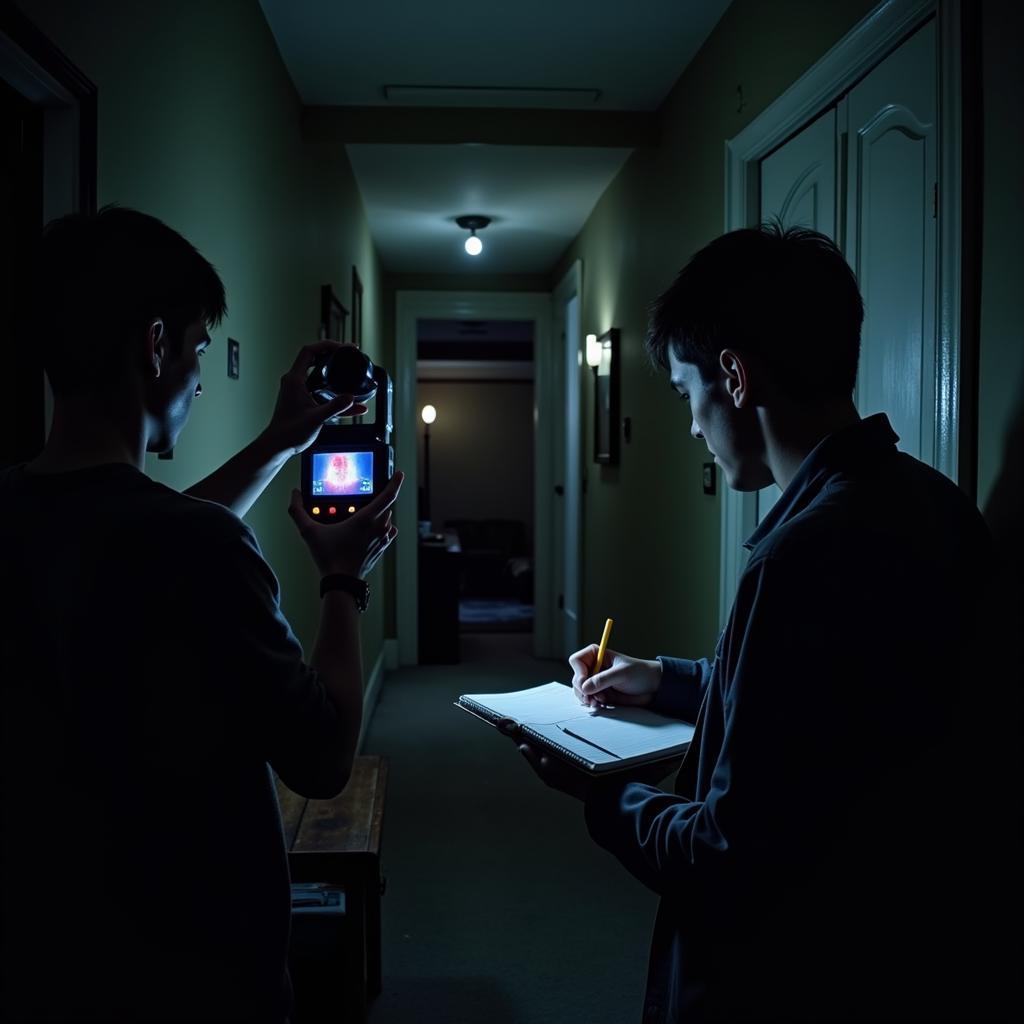Practical Research forms the backbone of credible paranormal investigations. Within the first few steps of any credible inquiry, meticulous planning and data collection are essential. This article delves into the practical research methods employed to explore the unexplained, offering a glimpse into the world of evidence-based paranormal investigation.
What is Practical Research in the Paranormal Field?
Practical research in the paranormal context involves applying systematic methods to gather and analyze data related to unexplained phenomena. It moves beyond anecdotal evidence and personal experiences, aiming to provide objective insights into the unknown. This approach utilizes tools and techniques borrowed from various scientific disciplines, adapted to the unique challenges of paranormal research. practical research planning and design emphasizes the importance of a structured approach.
What are the key elements of practical paranormal research? Key elements include rigorous documentation, environmental monitoring, and the use of control groups to isolate potential variables. By employing these strategies, researchers aim to minimize subjectivity and increase the reliability of their findings.
Implementing Practical Research: A Step-by-Step Guide
How can one conduct practical paranormal research? Here’s a structured approach:
- Formulate a Research Question: Clearly define the phenomenon you wish to investigate. This sets the direction for the entire research process.
- Literature Review: Explore existing research on the chosen phenomenon. This provides context and helps identify potential biases or unexplored avenues.
- Develop a Hypothesis: Propose a testable explanation for the phenomenon. This should be based on existing knowledge and the research question.
- Design the Study: Determine the appropriate research methods, data collection techniques, and control measures to address the hypothesis. practical research planning and design 12th edition provides a comprehensive guide to research design.
- Data Collection: Systematically gather data using the chosen methods. Maintain detailed records and document every observation.
- Data Analysis: Analyze the collected data using appropriate statistical and qualitative methods. Look for patterns and correlations.
- Interpretation and Conclusion: Interpret the findings in relation to the hypothesis. Draw conclusions based on the evidence and acknowledge limitations.
 A Paranormal Investigation in Progress
A Paranormal Investigation in Progress
Challenges and Ethical Considerations in Practical Research
Practical paranormal research faces unique challenges, including the unpredictable nature of the phenomena and the potential for observer bias. Ethical considerations are paramount. Respect for the location, the individuals involved, and the potential sensitivities surrounding the phenomenon are crucial. “Maintaining objectivity while acknowledging the subjective nature of many reported experiences is a constant balancing act,” says Dr. Amelia Hayes, a leading researcher in anomalous psychology. conceptual and practical research and statistics for social workers pdf offers valuable insights into ethical research practices.
What are some common pitfalls to avoid? Common pitfalls include relying solely on anecdotal evidence, neglecting control measures, and misinterpreting environmental factors.
 Analyzing Data in Paranormal Research
Analyzing Data in Paranormal Research
The Future of Practical Research in Paranormal Investigations
Practical research holds the key to unlocking the mysteries surrounding paranormal phenomena. By continuing to refine methodologies, embracing interdisciplinary collaborations, and prioritizing ethical practices, researchers can pave the way for a deeper understanding of the unexplained. practical research paul leedy provides a foundational understanding of research principles. As Professor Charles Vance, a physicist specializing in instrumentation for paranormal research, notes, “The application of rigorous scientific methods is essential if we are to move beyond speculation and towards credible answers.” practical research planning & design offers a roadmap for future research endeavors.
In conclusion, practical research provides a vital framework for investigating paranormal phenomena. By embracing a systematic and evidence-based approach, researchers can move closer to uncovering the truth behind the unexplained.
FAQ
- What is the first step in practical paranormal research?
- How can I minimize bias in my paranormal investigations?
- What are some common tools used in practical paranormal research?
- Where can I find resources on ethical considerations in paranormal research?
- What is the importance of data analysis in paranormal investigations?
- How can I design a robust Paranormal Research study?
- What are some common misconceptions about practical research in the paranormal field?
Scenarios
- You experience unexplained noises in your home. How can practical research help?
- You witness an apparition. What steps should you take to document the event using practical research methods?
Further Reading
Check out our articles on specific research methodologies and case studies.
Need Help with Your Paranormal Research?
Contact us! Phone: 0904826292, Email: research@gmail.com or visit us at No. 31, Alley 142/7, P. Phú Viên, Bồ Đề, Long Biên, Hà Nội, Việt Nam. Our 24/7 customer support team is ready to assist you.